Sceptics be silenced – Renault has done it! With the Kwid, the French brand, relatively new to Indian customers, has delivered a budget hatchback that’s not only very capable and attractive, but is also priced extremely competitively. And though we’ll perhaps have to wait a little while to see whether the promise of class-leading, long-term cost of ownership pans out, with 97 percent localisation of its components, things are looking promising. However, this is all only on paper, of course. Sure, we were very impressed when we first drove it last month, but to really be the best, it has to outdo two very important cars – the Hyundai Eon, thus far our pick of the segment, and the Maruti Alto 800, which is quite simply India’s favourite car if you go by sales numbers. We’ve brought the three together to see if the young upstart can actually topple the big hitters.
Bling For Your Buck
When you want to reach out to masses as vast as these cars do, it might be prudent to use a design that’s inoffensive and neutral. Perhaps that’s one of the reasons Maruti has been so successful with the Alto all these years, as that’s just what its look conveys. The new Alto 800 does serve up a bit more flair than its predecessor, thanks to a more characterful nose with swept-back tail-lamps, a thick ridge on the side, mildly flared wheel arches and a more interesting rear end, but overall and especially compared to the other two, it looks very ordinary. The Hyundai Eon was the one that threw convention on its head and proved first that a budget car needn’t look simple or boring. Hyundai had just become popular for its Fluidic Sculpture design language, and the Eon adopted many of those traits. It’s full of creases, curves and unconventional surfaces, which do well to disguise what is inherently a ‘tall boy’ hatchback shape, in Hyundai design speak. However, some buyers in this segment have found it a bit overstyled.
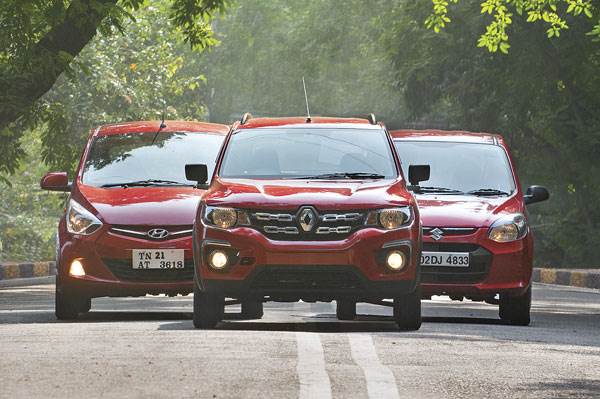
And then you have the Renault Kwid, which takes an even bigger departure from the norm for hatchback design – not just in this segment, but in general. Its squared-off shape is like a proper SUV’s, so much so it’s more convincing than even the recent bunch of trendy ‘cross hatchbacks’, which only add cladding and roof rails to a hatchback body. It’s also jacked up on its springs to offer 180mm of class-leading ground clearance, which only reinforces the ‘tough guy’ image. The detailing is also very impressive when you consider how much these little things cost to execute. Sure, our test car is fitted with the optional chrome accessories pack, but even without it, you get intricate-looking headlamps, chunky fog lamp enclosures, a rugged grille, black plastic cladding and a pair of rather elegant tail-lamps too. SUVs are really popular right now, and for first-time car buyers, many as they are in this segment, owning a car that resembles a crossover will be a very attractive proposition.
Outside In
Just as with the exterior, there are certain preconceived notions people have about what the interiors of a budget hatchback are like, and once again, while the Alto 800 keeps things simple, the Eon and Kwid attempt to break from convention. Yes, the Alto’s interior is a step up from its predecessor’s, which belonged in the 1990s, but some design flourishes like the air-con vents that bulge out of the dashboard and the contours on the dash top look a bit incongruous and out of place. The flat and featureless door pads only highlight how narrow the cabin is, and though not too bad, fit and finish is the weakest in this test.

The Eon, in terms of design and quality, has the best cabin here. Fit and finish are at the same level as many bigger Hyundais, and more than anything else, it just looks really cool, especially the hourglass-shaped central console. The two-tone colour scheme looks much better than the Alto’s dull grey, and the doors have properly usable storage bins in them. Even the switches, knobs and dials have a premium feel to them.
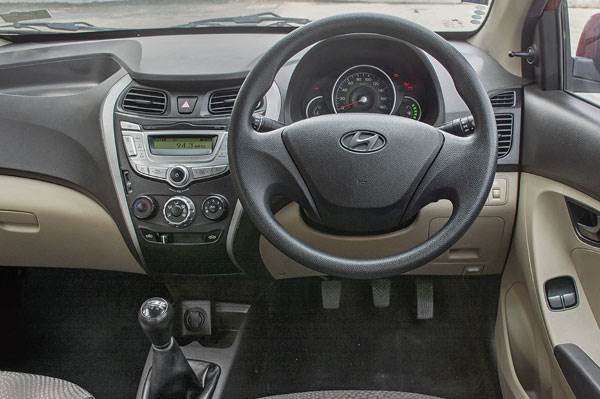

You can see how the equipment lists stack up against each other in our spec sheet, and though Hyundai is usually the king of kit, Renault has pulled off a great trick by offering a touchscreen with navigation and Bluetooth on the top trim, at a significantly lower price than the top-spec Hyundai, which makes do with a USB and CD-equipped audio system. These are still budget cars though, and some features – rear power windows, parking sensors and driver’s seat height adjust, for example – aren’t available on any of them. The Eon, however, does have the advantage of tilt-adjustable steering, the Alto doesn’t get fog lamps, while the Kwid misses out on inertia-reel rear seatbelts, which the others have. A more noticeable difference is the Kwid’s wing mirrors, which not only look basic and poorly integrated, they are also not adjustable from inside the car like they are in the others.
Micro Cars
Space is definitely a thing you don’t expect in a budget car, and sure enough, there’s not a lot of it in any of them. Though the Alto offers good head room at the rear, in every other dimension, it lags behind. It’s too narrow to seat three properly, your knees will likely brush against the front seats and the 177-litre boot is the smallest here. The seats are quite firm and you also sit really low to the ground. This means having to push the driver’s seat back to avoid kneeing the steering column, and for backseat passengers, poor thigh support and inadequate whiplash protection from the tiny seat back.
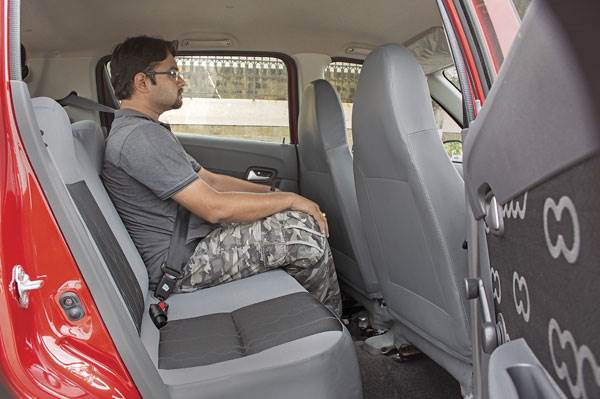
The Hyundai Eon is the middle ground. Also narrow like the Alto, but with a tad more legroom. That tall-boy design does at least mean it uses its height well – you sit high enough and rear seat passengers can tuck their feet under the front chairs. It’s also got the most comfortable and supportive front seats which, again, could be from a more expensive car. Yes, the small windows might make you feel a little hemmed in at the back, but you can get used to it.
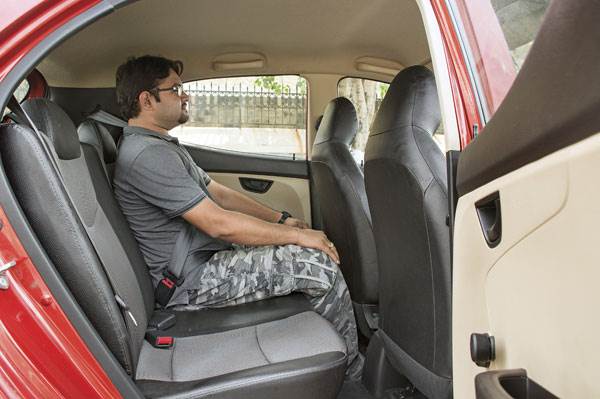
The Kwid’s shape makes it seem larger than the others, and it is, but not by as much as you think; the Eon is actually taller. Correspondingly, you get a little more passenger space than the rest. Width, however, is the one dimension where it really shines and it’s the only car you might consider squeezing five people into. The other advantage is the 300-litre boot, which easily eclipses what you find in the others. The seats are better than the ones in the Alto, but not quite up there with the Eon’s, offering decent cushioning and support.
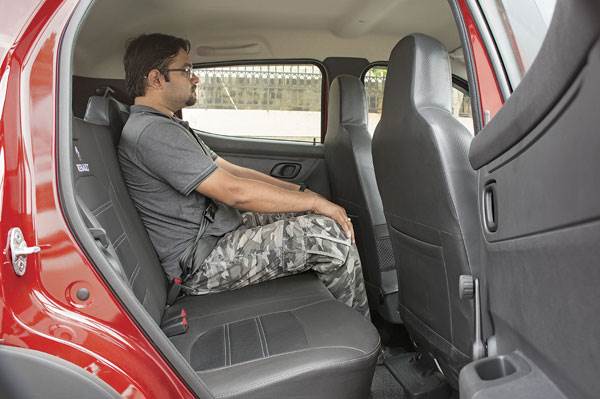
Small Helpings
The Maruti and Hyundai get the option of 1.0-litre engines, and we hear the Kwid might later get one too, but for now we’ll compare the 0.8-litre versions of all three cars. The 814cc Eon has a slight displacement advantage that gives it a smidge more power and torque than the Kwid, but the Renault takes it all back with a weight advantage – it’s a whole 50kg lighter than either of the others. So which is the quickest to 100kph? Wrong, it’s the Alto 800, though not by much. At 16.92sec, it’s 0.7sec quicker than the Eon and one second quicker than the Kwid and the three cars rank similarly when it comes to in-gear acceleration. Though it’s the heaviest and has the least power, the Alto’s performance is likely down to its punchier and more consistent power delivery right from the word go. It also speaks volumes of Suzuki’s venerable F8 series engine whose origins go back three decades. It’s an engine we’ve taken for granted all these years and it’s ironic that in such modern company, it’s now even more appreciated.
All three cars stutter a little off the line unless you feed in some throttle, at which point it’s the Alto that picks up the pace quickest. It has to be said, the Kwid is not bad off the line too, but then it starts to fumble with its flat power delivery. Floor the throttle and it feels lifeless in the mid-range as if there’s a ‘governor’ on the engine and it’s only at high revs that it picks up pace again. The Eon is the least enjoyable to drive, constantly jerking about and lurching you back and forth with every movement of the throttle. It is at least pretty refined and the smoothest revving of the lot. The Kwid’s motor has a distinct three-cylinder vibration at idle and though this smoothens out at higher revs, there’s a lot of mechanical noise and gearbox whine inside the cabin.
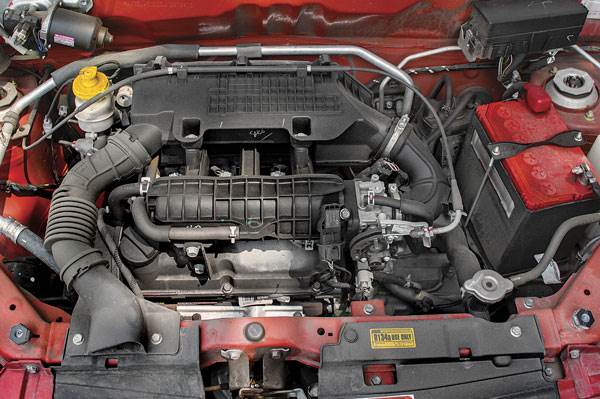
The Maruti, alas, is the noisiest motor here, so while you might enjoy driving it, you have to bear with quite a racket if you do. The Alto has the slickest gearbox of the three, with its short and mechanical throws; both the Hyundai and Renault ’boxes feel a little rubbery in comparison. Though all three use five-speeders, the Kwid uniquely uses a dog-leg reverse, which though unusual in this segment, is a great safety feature for new drivers.
The Urban Grind
Another thing inherent to this segment is the fact that lower-spec cars don’t get power steering, and so tend to be tuned for maximum lightness at the cost of firmness and security. Trouble is, this effect is multiplied when power steering is added and the results can often be quite disconcerting. For instance, all three cars suffer from what we like to call ‘sticky steering’ – meaning once you turn it, it doesn’t self-centre freely. We’ve felt this in the Alto before, but in this company it’s actually the most responsive to self-centre. It’s weighty enough to be reassuring without being too difficult to use, and it’s quick enough to redirect the nose easily. Neither the Eon nor Kwid have great steering – both feel vague and lifeless in your hands. The Kwid’s wheel is at least really light and easy to twirl, which is good for parking. All three cars corner pretty tidily, but the Eon feels a little nervous thanks to a softly tuned suspension setup and vague steering.
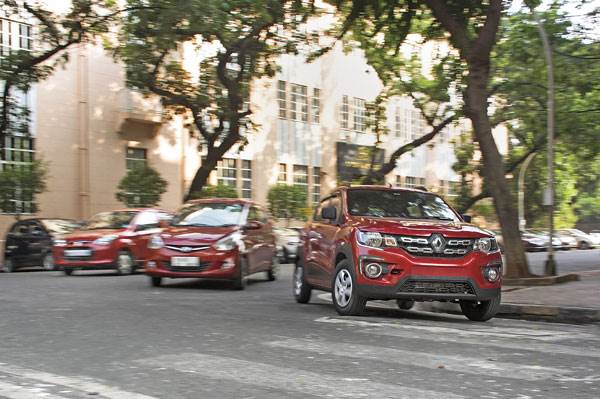
It’s a similar story with the ride, where the Eon sounds clunky and gets unsettled quite easily over bumps; something Hyundai just hasn’t managed to get right with many of its cars. The Alto 800’s ride in contrast does feel a touch firm, but for most intents and purposes, it irons out our bad roads quite well. The Kwid, like most of Renault’s cars, is in a different league when it comes to ride quality. It’s a superb blend of comfort and stability and it even holds its own out on the highway – not something the other two are good at. The Kwid’s high 180mm ground clearance also gives you peace of mind when going over tall speed humps or through large potholes.
The Small Leagues
Hyundai mounted a really strong challenge to the Alto’s dominance with the Eon, offering up a very premium product in a bare-bones budget segment. Sure, it’s a bit more expensive, but be it on the inside or out, you really feel like you’re getting your money’s worth and then some. It’s big on quality and style, and it’s only a slightly weak mechanical package that lets it down. Still, despite Hyundai’s reputation for good running costs, though we think it is the better car of the two, it has never made a big enough dent in Maruti Alto sales. Maybe it’s brand loyalty and a solid reputation, but there’s seemingly no stopping the Alto. It lags behind in some crucial areas – space, practicality, refinement and desirability, for example – but it still sells like the proverbial hot cakes. It is a strong mechanical package though, and nice to drive for what it is, but it may finally have a serious challenger on its hands. Not only is the Renault Kwid more attractive, more practical, more spacious and better equipped than the Maruti, it does it all at a price (albeit an introductory one) that slightly undercuts it in top-spec guise! It has its shortcomings, but they are few and easily forgivable at this price point. The Kwid has the makings of a winner, both in concept and execution, and therefore is also quite easily the winner of today’s test.

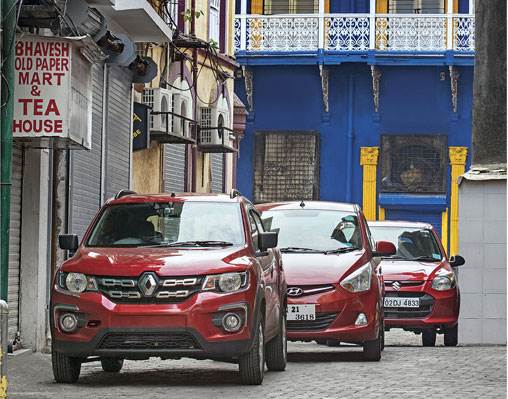
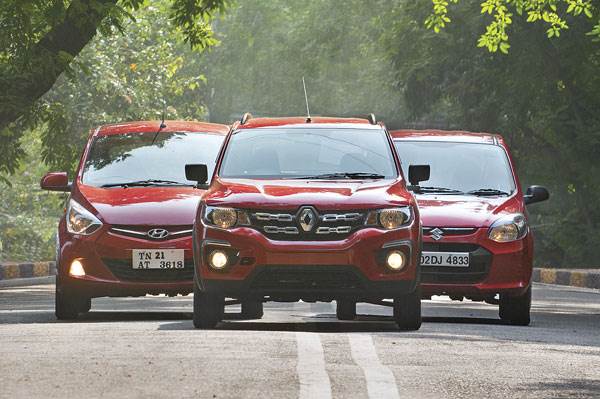
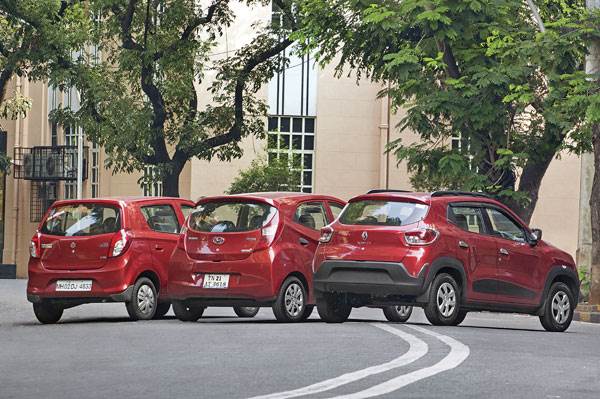
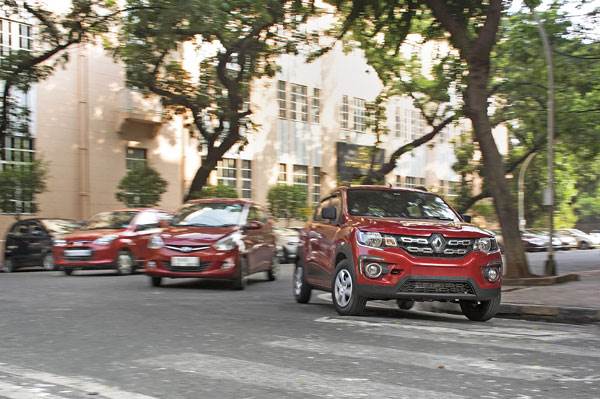

Comments
Member Login
Personal Details
No comments yet. Be the first to comment.